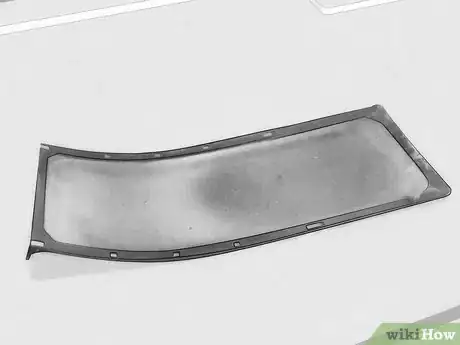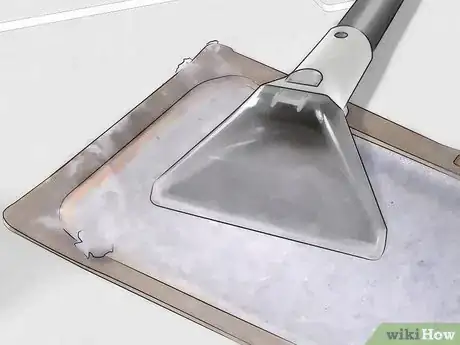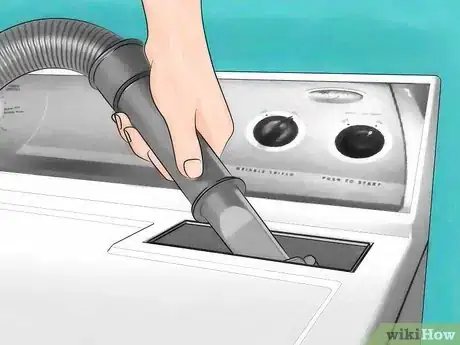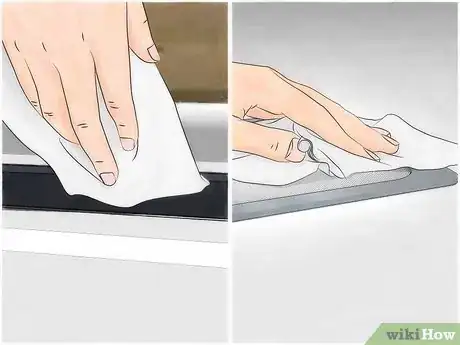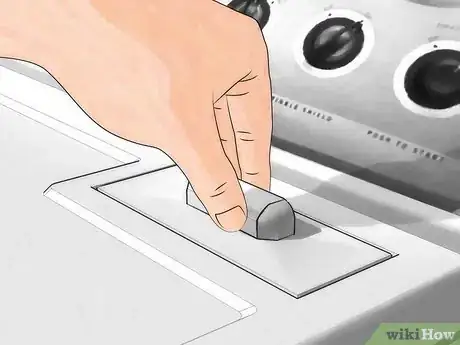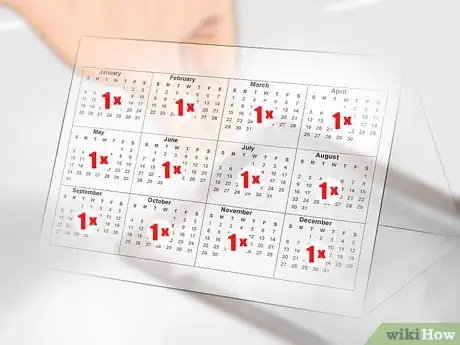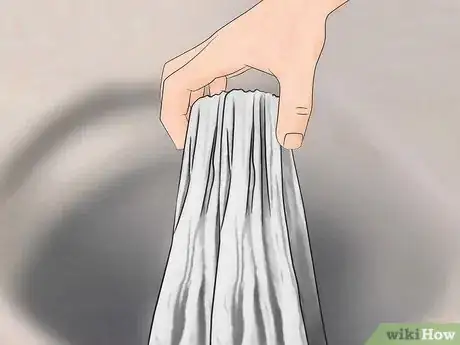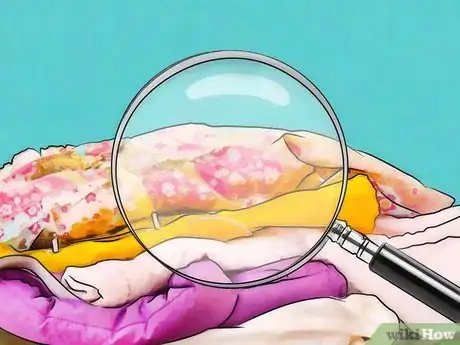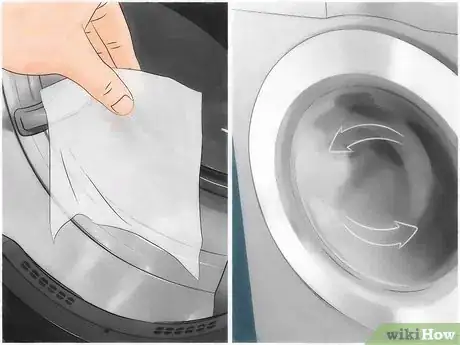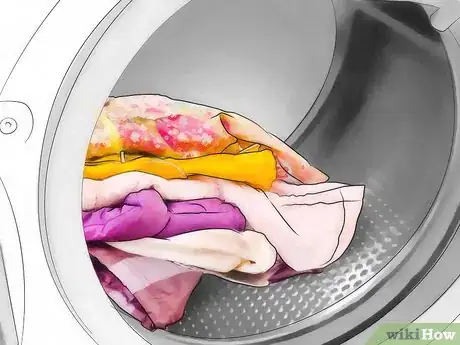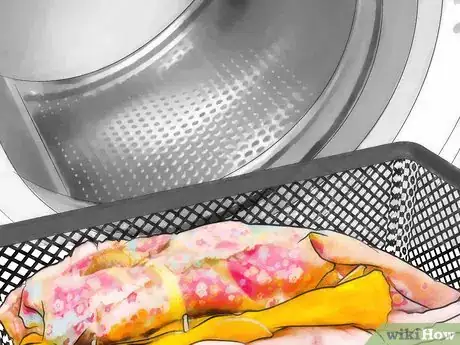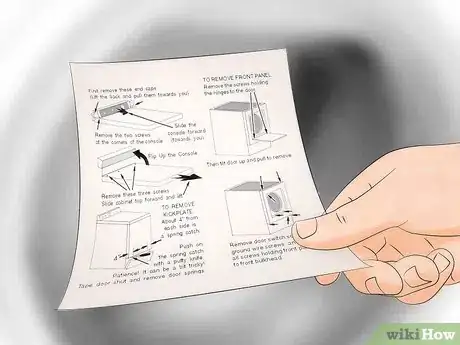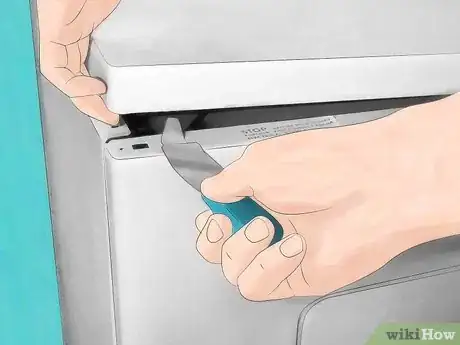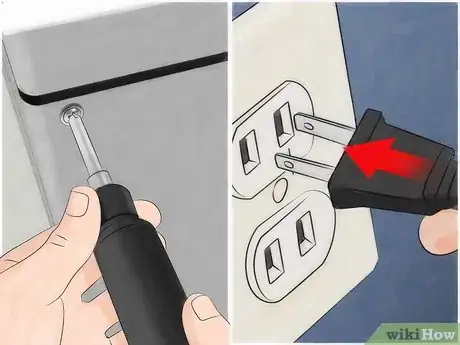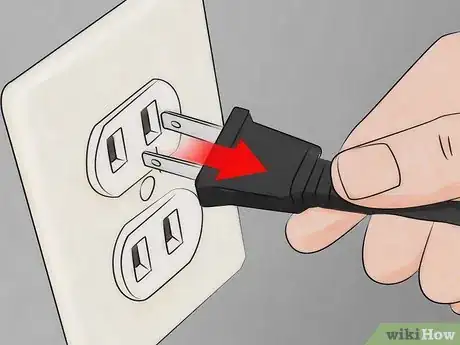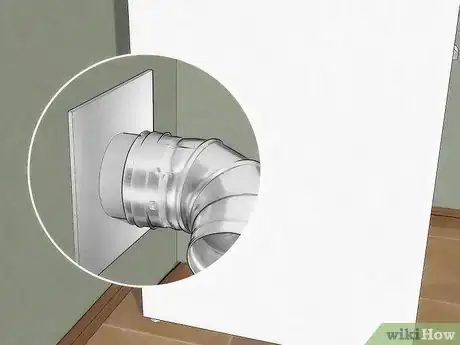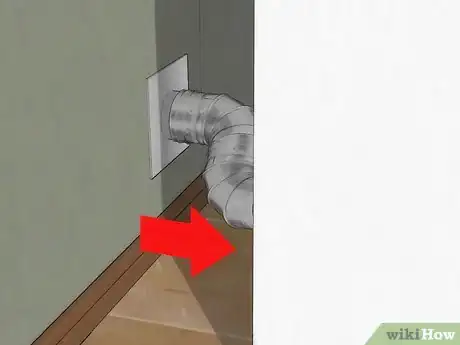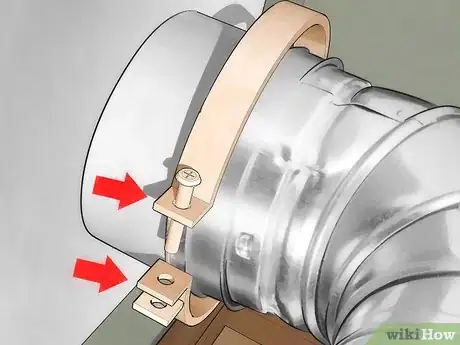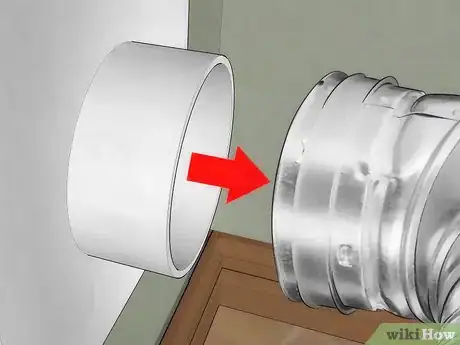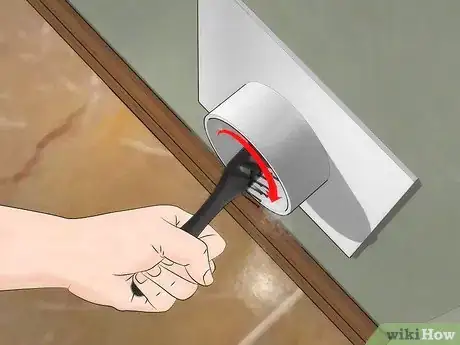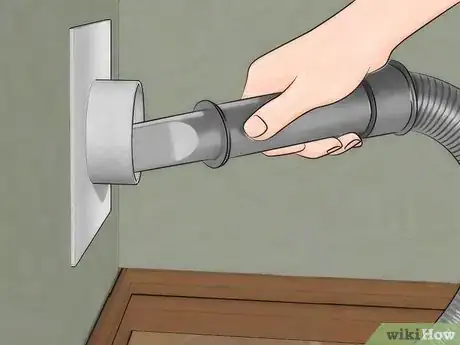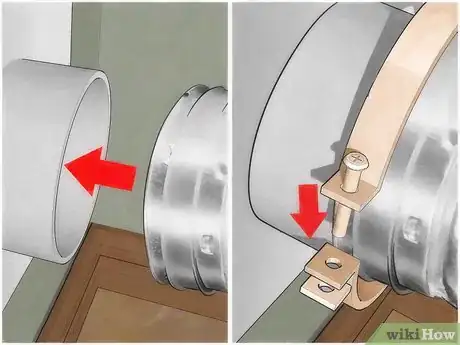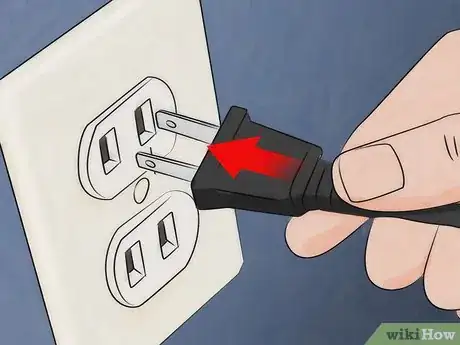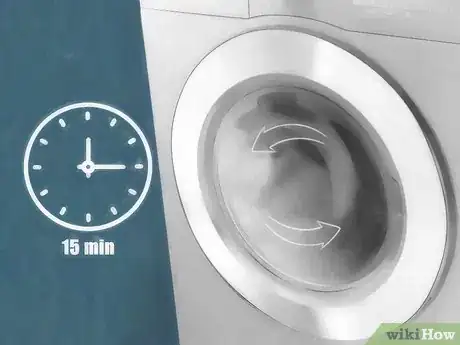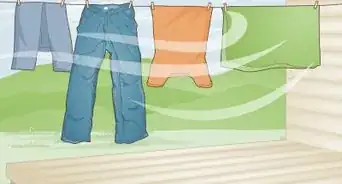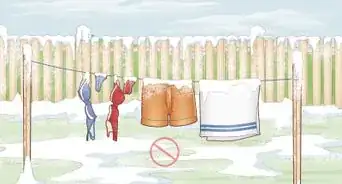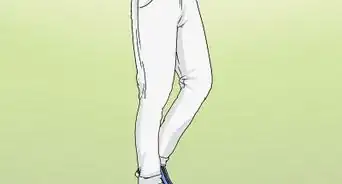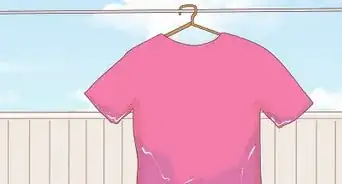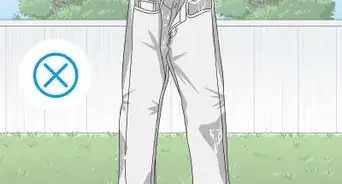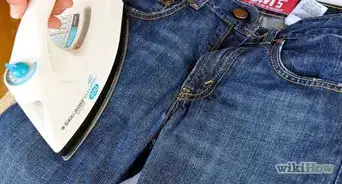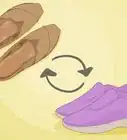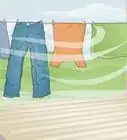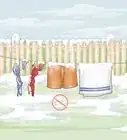This article was co-authored by wikiHow staff writer, Amber Crain. Amber Crain has been a member of wikiHow’s writing staff for the last six years. She graduated from the University of Houston where she majored in Classical Studies and minored in Painting. Before coming to wikiHow, she worked in a variety of industries including marketing, education, and music journalism. She's been a radio DJ for 10+ years and currently DJs a biweekly music program on the award-winning internet radio station DKFM. Her work at wikiHow supports her lifelong passion for learning and her belief that knowledge belongs to anyone who desires to seek it.
This article has been viewed 192,984 times.
Learn more...
If washed properly, clothes will always retain some lint. One of your dryer’s functions is to remove as much of that lint as possible during the drying cycle. However, occasionally we find our freshly dried clothing covered with lint anyway! By maintaining your dryer and following a few rules while drying your clothes, you can vastly reduce the amount of lint you find in your laundry.
Steps
Cleaning the Lint Trap and Filter
-
1Locate your lint trap. Depending on the design of your dryer, the lint trap will either be on the top of the dryer or located just inside the door.[1] Consult your appliance's user manual if you have any concerns.
-
2Locate your lint filter. It is located inside the lint trap, which is the slot the filter slides into. The lint filter is designed specifically to keep lint off of your clothes. If it accumulates too much lint, that lint will then end up on your clothing.[2]Advertisement
-
3Remove the lint filter from the lint trap. Pull the filter gently from the top and it should slide out easily. The filter looks like a fine mesh screen, held in a frame of plastic.
-
4Remove any visible lint from the filter. Using your fingers initially is the easiest way to begin.
- A good trick is to grab a little of the lint in the corner and then slide your fingers across the filter screen, picking up the rest of the lint along the way.
- Make sure to wipe the entire surface of the filter screen and discard any lint you remove.
-
5Vacuum the filter screen. Use a soft brush vacuum attachment. Turn on the vacuum and brush the attachment across the filter screen, which will remove any remaining lint.[3]
-
6Vacuum the lint trap. Use the vacuum attachment that has the long, thin neck and stick the attachment gently into the trap, as far as it will go. This will remove any residual lint from the trap.
-
7Wipe around the lint trap and the filter area. Use a soft rag, which will remove any lingering lint. If you notice any stubborn lint, try going back over the area using a dryer sheet. The remaining lint will cling to it.
-
8Wipe down the inside of the dryer door. Use a soft rag, which will remove any lingering lint. Use the dryer sheet trick in the previous step for any stubborn lint.
-
9Insert the lint filter into the lint trap. The freshly cleaned lint filter should slide easily back into place. You should hear it lock gently back into place. If you don’t, pull the filter out gently and re-insert until you hear it lock into place.
-
10Deep clean the filters approximately once per month. Simply remove them and wash with warm, soapy water. Allow them to air-dry thoroughly before replacing.
Drying Your Clothes
-
1Clean out your pockets. Do this prior to washing your clothing to avoid lint issues later during the drying cycle. The most common culprits are receipts, tissues, notes and candy wrappers.
-
2Remove your clothing from the washing machine. Remove the items one at a time, shaking them a bit to loosen any lint present. This also helps them stay wrinkle-free during the drying cycle!
-
3Inspect your clothing closely. If you notice any tissue, fluff or paper particles, remove them.[4] These will contribute to lint build up if they aren’t removed.
-
4Separate any lint-prone items. You’ll want to dry them separately to minimize the build-up and transference of lint onto your clothing. A common culprit is a fluffy towel – drying one with your garments will increase the likelihood of lint.
- Turning lint-prone garments inside out before drying them also helps minimize lint transference.
- Drying dark items separate from lighter items is also helpful, since dark colors emphasize the presence of lint.
-
5Toss a dryer sheet into the dryer. Dryer sheets help prevent static build up and minimize lint, so it’s best to always use them. Each sheet is effective for only one drying cycle.
- For large loads, toss in an extra one or two sheets.[5]
-
6Double check the lint filter. Make sure it is clean of all lint by pulling the filter from the lint trap and remove any that you see. Discard it as you normally would.
-
7Load your clothes into the dryer. Insert them one article at a time, to prevent them from sticking or tangling together, which encourages lint build up. This also helps prevent wrinkled laundry.
-
8Turn on your dryer. Let it do its thing! Be sure to use the settings recommended by your dryer manufacturer. Consult your appliance's user manual if you have any concerns.
-
9Remove your clothing from the dryer. Your clothing should be lint-free upon completion. Be sure to throw away the used dryer sheet.
-
10Remove and clean the lint filter. Re-insert it once the lint is removed. Now you are prepared for the next lint-free load!
Deep-cleaning the Dryer’s Interior
-
1Shut off the gas (if applicable) and unplug the dryer. Don’t worry, the procedure is the same whether your dryer is electric or gas, but both need to be shut off before cleaning.
-
2Determine how your particular dryer disassembles. Your dryer has one of two designs – either the lint filter is located on the top, or it’s located in a front panel.[6] Consult the user manual for your appliance if you have any concerns.
-
3Disassemble a dryer with the lint filter on top. You’ll need a screwdriver to do this, but otherwise dryers are built so that getting into them is fairly easy. Look beneath the filter – you should see a few screws there. Remove them using your screwdriver.
- Remove the top of the dryer from the catches. Do this by pulling the top of the dryer forward and then jerk it upward. You should then be able to easily remove the top from the catches at the corners.[7]
- Disconnect the door-switch wires in the front corner and remove the front panel of the dryer by unscrewing the two screws near the top of the panel.
- Tip the dryer forward slightly and you’ll be able to remove the front panel easily. You should now be able to see the inner workings of the dryer.
- Brush out the lint carefully from the inside of the dryer and vacuum all around the drum using the long neck vacuum attachment.
- Clean the heating element thoroughly, but be very careful around the wires and small parts.[8]
- Put the front panel back into place. Put the front screws back in and reattach the wires.
- Set the top back down into place and secure the screws under the filter.
-
4Disassemble a dryer with the lint filter located in the front panel. You’ll need a screwdriver to do this, but otherwise dryers are built so that getting into them is fairly easy. Remove the front bottom panel by sliding a screwdriver into the top of the bottom panel. This will release it from the two catches that hold it in place.[9]
- If your dryer has a removable front panel, you won’t need to use a screwdriver in this way. Simply release the catches, remove any screws, and remove the panel. You should now be able to see the inner workings of the dryer.
- Vacuum around the dryer motor and inner workings of the machine using the long neck attachment.
- Wipe around electrical workings and small parts very carefully to avoid breaking them.
- Put the front panel back into place. If your dryer has screws holding it into place, don’t forget to screw them back in securely.
-
5Plug the dryer back in and, if applicable, turn the gas back on. When working with the power sources, be sure to work carefully around the tubing behind the appliance.
Cleaning the Lint Vent
-
1Shut off the gas (if applicable) and unplug the dryer. Don’t worry, the procedure is generally the same whether your dryer is electric or gas, but both need to be shut off before cleaning. Consult the user manual for your appliance if you have any concerns.
-
2Locate the lint vent. The lint vent is located on the back of most dryers, either near the top or the bottom of the appliance. You are looking for either flexible aluminum tubing or piping.[10]
-
3Pull the dryer gently away from the wall. This is so that you can access the vent. Be sure to work carefully around the tubing as you do so.[11]
-
4Remove the vent from the wall. To do this, use a screwdriver to loosen the metal clamp that holds it in place. Set the vent aside on the floor for now.
-
5Pull the tubing away. Do this gently, taking care not to tear a hole in it.[12] Set the tubing carefully aside for now.
-
6Clean the wall piping and vent. Use a vent brush, turning the brush clockwise for the best effect. You can also turn it counter-clockwise, just make sure to stick with one direction or the other, not a combination.
-
7Clean the removed tubing. Pick it up gently and hold it up in front of you. Brush into the tubes with your vent brush. At this point you and your floor are most likely covered in lint!
-
8Vacuum inside the tubing and vent. Use the long neck attachment to remove any remaining lint. Vacuum carefully so that nothing gets damaged.
-
9Vacuum the floor. Use the long neck attachment, taking care to get all of the lint up. Work it into the nooks and crannies.
-
10Put the dryer vent back into place. Don’t forget to tighten the screws on the clamp to fix it in place. Secure the tubing carefully.
-
11Replace the dryer back against the wall. Be sure to continue working carefully around the tubing. It can be easily damaged, but should be absolutely fine as long as you are careful.
-
12Plug the dryer back in and, if applicable, turn the gas back on. When working with the power sources, be sure to work carefully around the tubing behind the appliance.
-
13Turn on your dryer for about 10-15 seconds. This will flush out any remaining lint. Shut it off after the flush. Your dryer is now ready for use!
Community Q&A
-
QuestionHow can I get lint balls off a woven shirt?
 Community AnswerUse a lint roller or wrap tape around your hand (sticky side facing out) and roll it all over the garment.
Community AnswerUse a lint roller or wrap tape around your hand (sticky side facing out) and roll it all over the garment. -
QuestionHow do I clean a dryer vent?
 Community AnswerThe vent inside the dryer can be full of with lint, causing the dryer to dry less smoothly. To clean your vent, remove the outside cover on the vent, then use a lint brush to clean the inside of the pipe. You can get a brush at Walmart for about 6 dollars.
Community AnswerThe vent inside the dryer can be full of with lint, causing the dryer to dry less smoothly. To clean your vent, remove the outside cover on the vent, then use a lint brush to clean the inside of the pipe. You can get a brush at Walmart for about 6 dollars.
References
- ↑ http://greenlivingideas.com/2014/08/14/clean-dryers-lint-trap-duct-screen/
- ↑ http://wellslaundry.com/dryer-keep-lint-off-clothes/
- ↑ http://greenlivingideas.com/2014/08/14/clean-dryers-lint-trap-duct-screen/
- ↑ http://wellslaundry.com/dryer-keep-lint-off-clothes/
- ↑ http://wellslaundry.com/dryer-keep-lint-off-clothes/
- ↑ http://www.familyhandyman.com/appliance-repair/washer-and-dryer-repair/dryer-lint-cleaning-tips/view-all#step2
- ↑ http://www.familyhandyman.com/appliance-repair/washer-and-dryer-repair/dryer-lint-cleaning-tips/view-all#step2
- ↑ http://www.familyhandyman.com/appliance-repair/washer-and-dryer-repair/dryer-lint-cleaning-tips/view-all#step2
- ↑ http://www.familyhandyman.com/appliance-repair/washer-and-dryer-repair/dryer-lint-cleaning-tips/view-all#step2
- ↑ http://greenlivingideas.com/2014/08/14/clean-dryers-lint-trap-duct-screen/
- ↑ http://greenlivingideas.com/2014/08/14/clean-dryers-lint-trap-duct-screen/
- ↑ http://greenlivingideas.com/2014/08/14/clean-dryers-lint-trap-duct-screen/
- ↑ http://cleaning.tips.net/T004296_Reduce_the_Amount_of_Lint_in_Your_Laundry.html


